With their magnificent intricate patterns, stunning colors and superior finish, you would imagine that Persian and Oriental rugs would be made by highly trained professionals using very advanced, complex machinery, high end materials and custom manufactured dyes.
How Persian Rugs are Made: Anatomy and construction
Table of Contents
Surprisingly, none of that is true. Hard to believe but Wool Oriental rugs are hand woven on some of the most basic types of looms imaginable.
The material used is usually home spun wool and occasionally cotton or silk and the dyes are extracted from indigenous flora.
Admittedly the weavers are trained but their training does not entail sitting in a classroom learning the theories of weaving.
The art of weaving is passed down from one generation to the next within the same tribe or village, thus preserving the integrity of their art.
Sneak Peak Into The Traditional Art Of Rug Weaving
All you need for a loom are 2 tree trunks and a couple of poles!
That’s true – For nomadic weavers who lived in the mountainous regions in Iran and who were constantly moving in search of greener pastures for their sheep, dismantling the loom and setting it up at every new destination means they have to keep it simple.
These nomadic weavers actually weave their magnificent creations using a few poles stretched horizontally between two tree trunks.
The village loom also consists of two vertical posts with 2 horizontal beans stretched between them. The only difference is that these looms are permanent as they do not need to be moved from place to place.
This permanent nature of the look allows the village weavers to weave rugs that are of a slightly better quality than the tribal rugs.
Some weavers even use vertical looms.
Understanding Warp And Weft Threads

A true Persian and Oriental rug is always hand woven using two types of threads – the warp and the weft.
The warp threads run vertically in the north-south direction and the weft threads are the ones that are used in the weaving and they run horizontally or west to east.
The weft threads separate the different rows of knots.
To begin with, the warp threads are first passed around the lower beam. Then all the free ends are gathered up together and fixed onto the upper beam.
Basically what a loom does is it separates the warp into two sets. This allows the weaver to reverse them after they’ve inserted each weft thread.
Once this is done, the intended rug areas are knotted, forming the basis for the pile of the Oriental rugs.
Materials And Tools Used
Wool
Sheep wool is the most commonly used material in the making of Oriental rugs. The grazing conditions determined the type of wool that was used and ultimately the quality of the rug. In some regions where the sheep wool was not easily available, weavers used camel wool or goat’s wool.
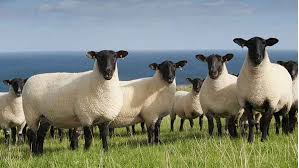
Its insulating, fire resistant, and sound proofing properties, along with its durability, easy availability and soft texture are some of the reasons why Persian rug weavers favor wool in the warp, weft and even the foundation.
Cotton
Somewhere down the rug-making centuries, weavers started using cotton because so give the rugs additional stability and durability.
Although cotton rugs do not have the finesse that wool rugs do, they last longer making them more cost effective too.
Most weavers use cotton in the foundation when creating their rugs. Very few rugs have pile made up of cotton.

Silk
You can also find Oriental rugs made of silk. These look lush and luxuriant not only because of the glossy thread itself but also because the thread is easy to work with and so weavers can make more knots per square inch, enhancing the quality of the rug even more.
Silk rugs can be very expensive but they have a beauty and feel that is incomparable.
Nothing can beat the fine quality, texture and durability of a silk Persian rug. However, silk is rarely used because the fiber itself is very expensive and because it is so fine, more material is needed to cover a small area. This adds to the cost of the rug.
Silk is usually only used in the pile or knots not in the foundation.
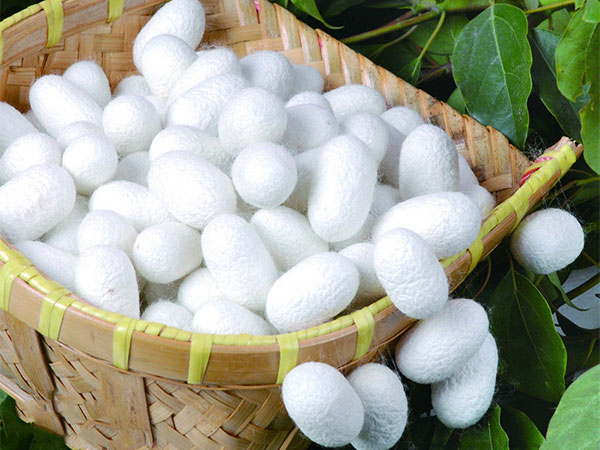
Dye
Until the introduction of chemical dyes in the late 19th century, only natural color sources such as fruits, vegetables, bark, roots and fungi were used.
Most popular were the madder root used to produce reds, and the indigo plant for blues.
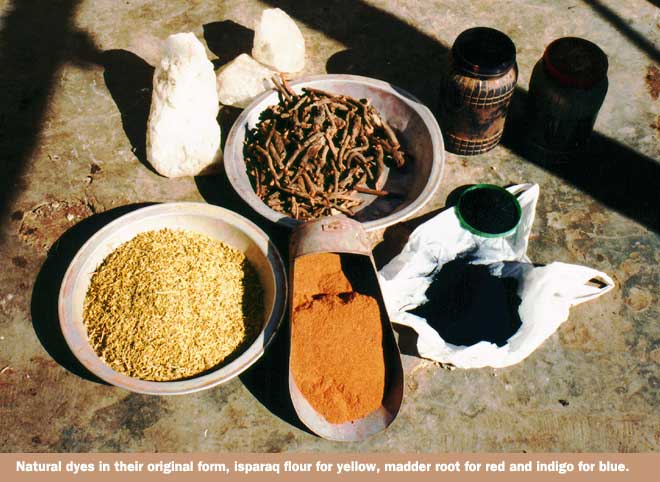
Comb
The metal-toothed comb is used to press the knots in place and beat down the weft between the rows of knots. This secures the knots firmly before starting on a new row.
Hook
The tip of the hook is used to separate strands of warp while tying a knot, while its side is used to cut the yarn after tying each knot.
Spindle
This consists of a rod on which the fiber is spun into yarn.
Scissors
As the rug is woven, the long or uneven pile is cut using a special type of scissors.
Knife
After each knot is tied, the threads are cut using a knife or a hook that looks very similar to a knife.
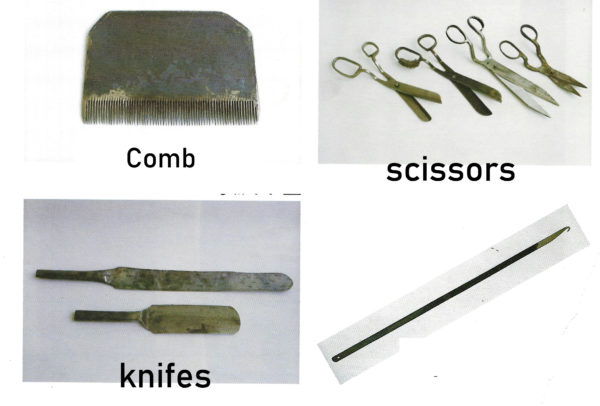
Design Plate
All workshop rug weavers and a few village rug weavers use a design plate as a reference guide showing them what colors to use in different parts of the design.
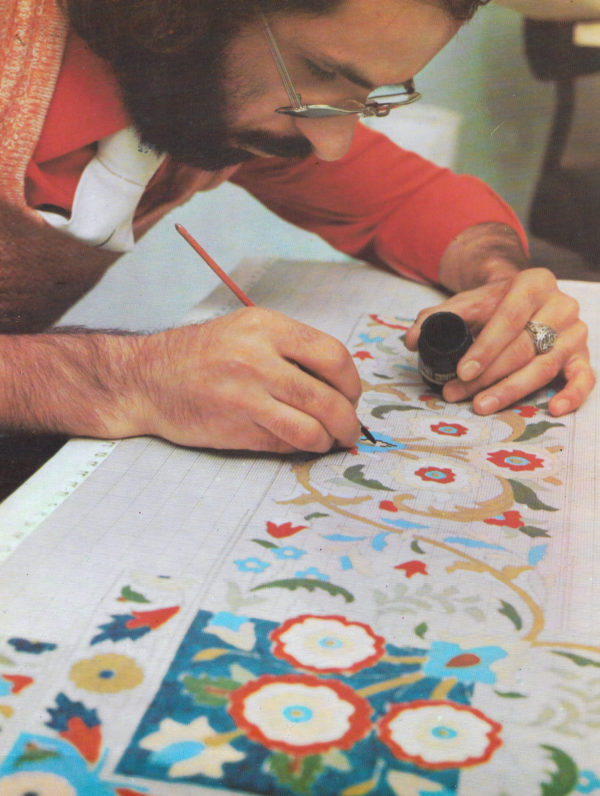
Loom
Village rugs are created on horizontal looms, which are the most basic type. Vertical looms are more sophisticated and used to create city rugs.
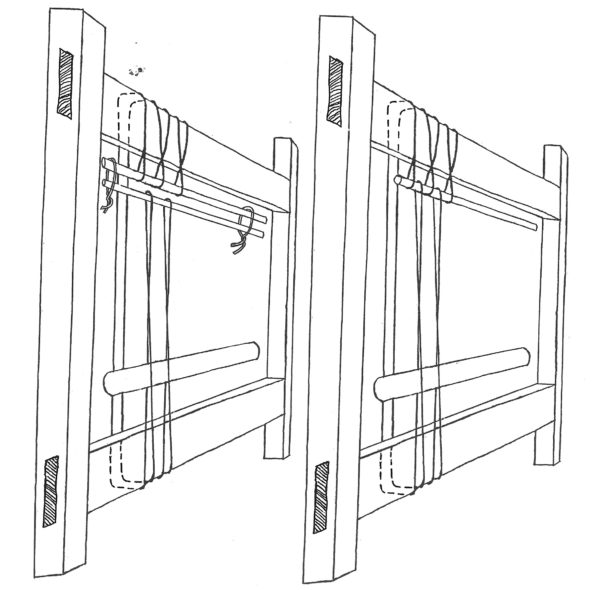
Pile
The pile is the top part of the rug that you see and walk on, while the foundation is the skeleton of the rug where the pile is woven through. In this article, we’ll be discussing the three most common materials used for the foundation and pile of Persian rugs.
The most common combination for Persian rugs is a cotton foundation with a wool pile. However, there are other materials that can be used, including silk, mohair, goat hair, camel hair, and cow hair.
Silk and Wool Pile
Silk and wool piles are made up of a combination of wool and silk, with the ratio of each material varying. These rugs typically have a majority of wool and use silk to highlight parts of the design. This combination allows for a higher knot density and a finer design but also increases the cost of the rug.
Silk and wool piles are often seen in traditional Persian rugs, such as those from Isfahan, Tabriz, Nain, Kashan, Mashad, and Bijar.
100% Silk Pile
Finally, 100% silk piles are the least common and are only used in the finest Persian rugs.
These rugs have the highest level of detail and the highest knot density, with knot counts ranging from 600 to 1000 KPSI. However, the cost of using 100% silk in the pile, combined with the fine weaving required to create intricate designs, makes these rugs the most expensive.
Rugs from Qum and Isfahan commonly have 100% silk piles.
Knots
Asymmetrical (Persian or Senneh) Knot
This type of knot is created by wrapping the yarn around one warp strand, passing it under the adjoining warp strand and then bringing it back to the surface. It creates a finer weave allowing a higher knot density.
Symmetrical (Turkish or Ghiorde) Knot
This knot type is created by passing the yarn over two adjoining warp strands, then wrapping the end of each yarn behind one warp, and finally bringing the yarn ends back to the surface in the middle of the two warps. It provides more sturdiness and is used for thicker rugs.
Jufti Knot
This knot is created by tying the yarn over four warps instead of the standard two, speeding up the process. The knots can be symmetrical or asymmetrical.
Tibetan Knot
The creation and structure of these knots are different from all other knots. In this technique a longer strand of yarn is placed around two warp threads and then around a rod that is temporarily placed in front of the wrap along the rug’s width. The knots are created by cutting the loops around the rod.
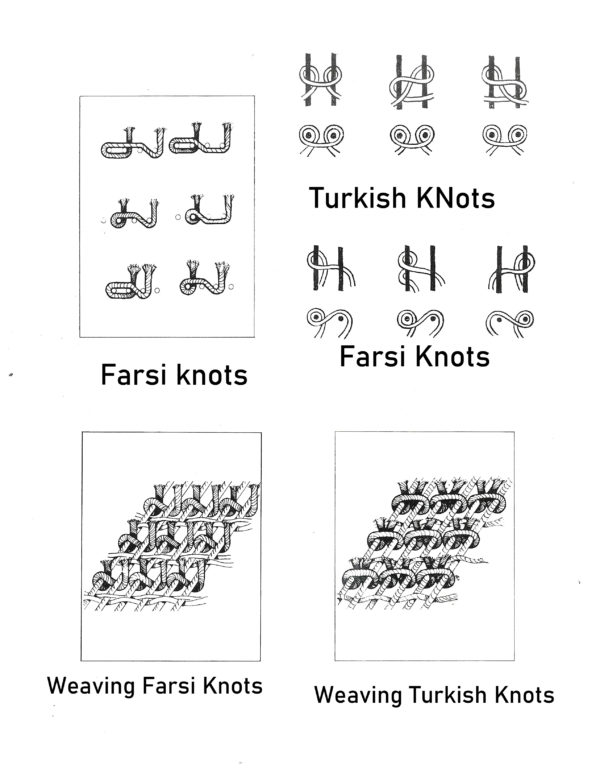
Washing After Weaving
After weaving, the pile is clipped down carefully to make it look even. The rug is then washed multiple times to remove any lingering debris as well as the excess dye.
This gives the rug a clean look and ensures that there is no bleeding of the excess dye at a later stage.
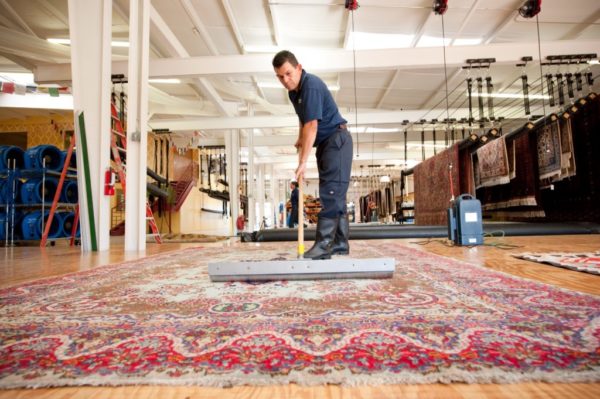
Finishing & Fringing
The final stage involves the finishing in which the damp rug is placed on a blocking device and checked for quality control. Drying the rug on this device prevents any excessive shrinkage.
The weaver will also make sure that the fringes are properly secured to give the completed rug a neat and professional look.
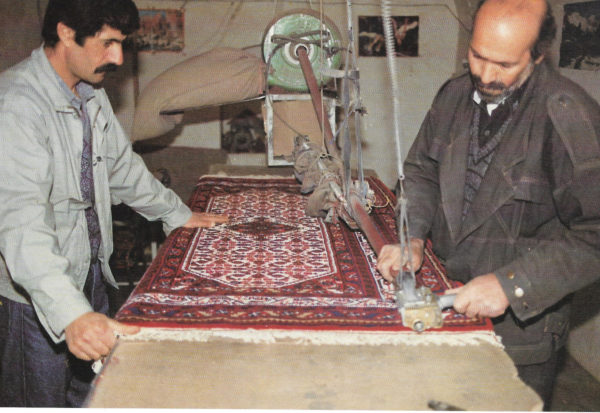


5 thoughts on “How Persian Rugs Are Made”
I bought a rug in India of the garden pattern. It used colors which I selected and made to a dimension fitting our dining room I requested a picture of them making the rug which was about 11 x 14 ft. I have that picture with about 2 ft of carpet if you would like it. I would give the right to use it if you would want it for illustration.
I love Persian rugs and have 5 down on our floors and store about 3 more. My grandfather purchased in 1907 on a trip to Europe and the Mideast – I have his diary which briefly mentioned it. From your information I believe all of them are Tribal and not famous or valuable. But they were suppose to be antique in 1907 and still are wearing well.
I keep looking at another area of our home for an Oriental rug addition.
Dear Lee,
If you would like you could email me pictures of your rugs. and if you need to choose a rug feel free to call or email me for more information.
Could you make a video explaining how to recognize the identity, the origin or Iranian city, of a particular rug. Is it possible for a non Iranian to recognize the difference between a Sarouk and a Tabriz? Also, I’m located in North Carolina; do you have any stores on the east coast? Thank you
Hi Richard, thank you for the idea, and yes we will be eventually working on videos to show how to tell the difference between some of the more popular types of Persian rugs.
It is certainly a difficult skill that I would say even the seasoned rug expert sometimes would struggle telling the difference. But we can certainly try to highlight some of the characteristics that can help distinguish them.
Our warehouse and showroom is located in Southern California, and we don’t have any stores in the East coast. We do have provide free shipping and free returns so if you can purchase any rug risk free and always return it if it doesn’t work out. Thank you and have a wonderful day.
Hey! Would you mind if I share your blog
with my twitter group? There’s a lot of folks that
I think would really enjoy your content. Please let me know.
Thanks